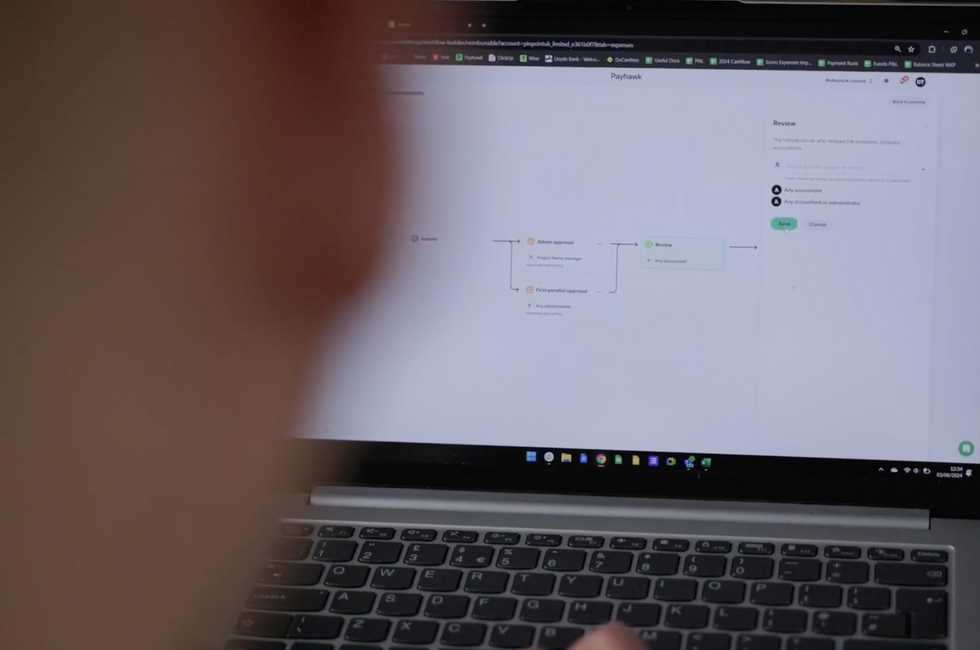
Navigating supply chain challenges: How manufacturers should adapt their finances



As the global supply chain faces repeated disturbances, the key focus for manufacturers is to prioritise flexibility, agility, and responsiveness to customer demands. However, the traditional procurement process often lacks the speed required for such adaptability.
By submitting this form, you agree to receive emails about our products and services per our Privacy Policy.
In this article, Hristo Borisov, CEO and Co-founder of Payhawk, offers insights on how manufacturers can navigate the complexities of supply chain management challenges by adapting their financial systems.
Supporting supply chain flexibility and monitoring margins
“The main goal for manufacturers is always maintaining their margins," explains Hristo Borisov, CEO of Payhawk. “Most manufacturing businesses work to tight margins at high volume, meaning a 1% difference in cost can completely erode profit.”
In an economy experiencing high inflation, domestic demand for products and services may wane. This kind of fluctuation highlights the significance of cost control and spend visibility for manufacturers. And the need to take firm control over spending, including subsidiaries, subscription management and recurring payments, becomes increasingly vital.
According to Hristo, taking proactive measures to mitigate the adverse impact of inflation — especially when selling your goods through resellers and retailers — involves linking pricing to inflation in your contracts.
“Rather than increasing prices, much of the focus is going to be on keeping costs low,” Hristo says. “The flexibility of the supply chain is important to be able to negotiate discounts. And the focus should be on balance and being agile to get the lowest cost while maintaining quality.”
Learn more about time-saving spend management
Leveraging fintech for enhanced spending insights
Companies are increasing their tech and software expenditures in today's market, often adopting SaaS-model solutions and services. Managing these modern systems looks very different from the previous methods used by manufacturers.
"In the past, it meant managing credit limits, supplier compliance, supply chain, deliverables, service-level agreements (SLAs)," Hristo says. "However, now all these widespread supplier management techniques don't work well for subscriptions because the risks are so different. In subscriptions, the risks lie in duplicates, particularly in relation to bulk-buying and cost creep."
Bulk buying is a common practice in manufacturing to reduce unit costs, and the same principle can apply to subscriptions. By identifying all licenses used across the company, manufacturers can negotiate a global license to optimise expenses and uncover savings opportunities.
However, according to Hristo, many companies lack complete visibility over their costs and outgoings (including subscriptions), which poses a challenge. Another risk associated with subscriptions is cost creep, where prices may increase over time, making it crucial to monitor usage data for effective cost management.
Hristo emphasises that this requires a different spend control approach than traditional manufacturing practices. Employing innovative expense management technology can provide a comprehensive understanding of spending, enabling better management of subscriptions and expenses.
Leveraging technology for efficient spending prioritisation
While investing in technology may involve upfront costs, it can prove more cost-effective than hiring additional staff, especially in high inflationary markets with associated salary or wage expenses. Updating financial systems and ongoing tech investments can lead to long-term cost savings.
Borisov highlights the significant potential for automation in the finance function, including using AI to streamline manual processes. He clarifies that automation doesn't replace accounting staff but aims to upskill them through training, enabling them to focus on valuable tasks like strategy, cross-company collaboration, and forecasting.
Currently, many people in manufacturing are engaged in manual finance admin due to the industry's high volume of transactions. But by automating expense and subscription management processes, manufacturing staff can shift their focus to analysing information and effectively communicating data to stakeholders, thereby making better business decisions. This transition to more value-add activities fosters greater efficiency and drives commercial growth.
Enhancing user experience through investment to benefit your finance team
In the manufacturing industry, inventory management systems are often integrated into Enterprise Resource Planning (ERP) software, a crucial tool for business management. However, some ERP systems lack user-friendly features to support business spend management before expenses reach accounting.
Modern spend management solutions, including corporate cards, spend control, categorisation, and automatic data capture, are available on the market. And when well-integrated with an ERP, these solutions enable users to create and reconcile business expenses seamlessly in real time. This transformation in user experience provides day-to-day finance managers with greater ease and efficiency.
"Working without expense management and an ERP is like driving a 30-year-old car — no comfort and no speed. Some businesses have a back office with 25 people punching in numbers, but it's not efficient or necessary. We prefer to work with Payhawk to automate, integrate, and save money," explains Giancarlo Bruni, CFO at Heroes.
A connected view over spending represents a generational change that not many systems can achieve independently. By adopting software with a user-friendly interface, the finance team can reduce time spent on expense tracking and manual reconciliation, allowing them to focus on more strategic tasks like forecasting and stakeholder engagement.
"We can be proactive, track costs, and get visibility of expenses as they happen… Rather than being reactive and always working behind," confirms Nick Millard, VP of Finance at GDS Group. "That has freed us up to look into future spend rather than always reporting on historic spend."
Additionally, this improvement in work satisfaction can positively impact employee turnover rates, as fulfilled staff members, experiencing the real impact of their work and avoiding manual stress, are more likely to stay in their positions.
Ensuring risk management and governance in the manufacturing sector
Manufacturing faces substantial regulations concerning health and safety, environmental responsibilities, and other areas. Complying with new regulations often incurs costs, making access to short-term capital crucial and having diverse options for obtaining it.
In the modern era, traditional reliance on banks for credit cards or loans is no longer the only option. Fintech has introduced neo-banking services that offer secure funding solutions.
“Most modern solutions like Payhawk are protected under an EMI scheme which means any funds using Payhawk as a debit solution is safeguarded and can’t be used for any other purposes,” continues Hristo.
Companies like Payhawk provide a protected Electronic Money Institution (EMI) scheme, ensuring funds used with Payhawk as a debit solution are safeguarded. This protection allows manufacturing companies to optimise cash flow efficiently, especially if they already have capital or long-term financing loans.
Working in a finance team within the manufacturing sector? Improve your expense management processes today and get complete control and visibility with Payhawk. Book a demo today.
Trish Toovey works across the UK and US markets to craft content at Payhawk. Covering anything from ad copy to video scripting, Trish leans on a super varied background in copy and content creation for the finance, fashion, and travel industries.
Related Articles


6 tips to maximise efficiency with invoice processing and automation

